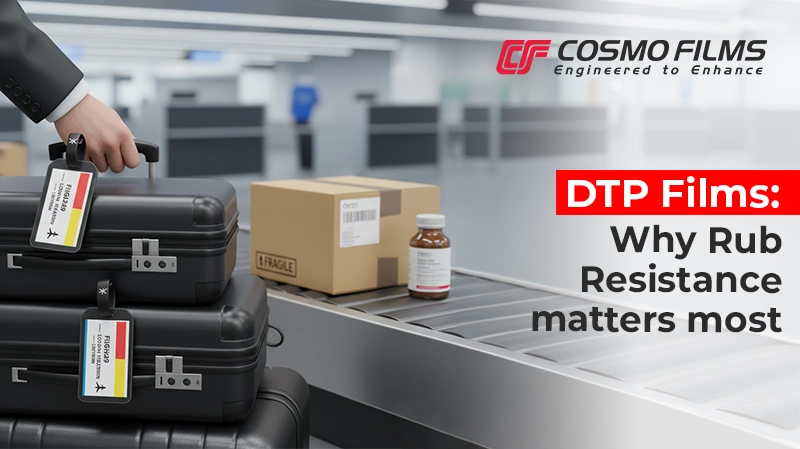Love to hear from you!
Get in touch.

Labels are critical in identification, tracking, and
communication across industries. They carry information that must remain clear
and readable throughout handling, transportation, and storage. For applications
where efficiency and precision matter, DTP films have become a preferred
choice. They enable fast, ribbon-free printing and produce sharp, high-contrast
images suitable for barcodes, product data, and variable information.
However, the true measure of a DTP film’s quality is not just
how well it prints, but how well that printed information endures. The film’s
rub resistance, which helps maintain print integrity under friction or contact,
often determines whether a label performs reliably in real-world conditions.
Let’s see how rub resistance is a defining factor in the
performance of these printing films.
Why does the rub resistance of DTP films matter?
Rub resistance refers to the ability of the printed surface to
withstand abrasion without losing image or print clarity. When a label rubs
against packaging, conveyor belts, or other surfaces, friction can cause
smearing, fading, or complete loss of printed data. The higher the rub
resistance, the better the film can preserve the printed information over time.
Cosmo Films’ Direct Thermal Films are engineered to
deliver strong rub resistance, ensuring that printed labels remain readable and
intact from production to the end of their lifecycle.
How rub resistance defines DTP Film’s performance
Material engineering behind rub resistance of DTP Films
Achieving high rub resistance requires precise material design
for these printing films. The best DTP films are engineered
through multi-layer constructions that combine print sensitivity with
protective durability.
Key innovations include:
·
Advanced topcoats
·
Optimized polymer blends
·
Antistatic and anti-smudge treatments
·
Surface energy control
These developments allow manufacturers to produce DTP films
that deliver both excellent print quality and long-term image protection, even
under demanding conditions such as automated handling or outdoor exposure.
Conclusion
Rub resistance is not merely a secondary attribute, but a
defining performance measure for DTP films. While factors like print
sensitivity, contrast, and cost are important, the film’s ability to maintain
legibility under mechanical stress often determines its true operational value.
Our advanced DTP films are engineered with superior rub resistance and
print stability, ensuring unmatched performance across demanding industrial and
commercial applications. Reach out to us today!
Featured Post
Love to hear from you!
Get in touch.